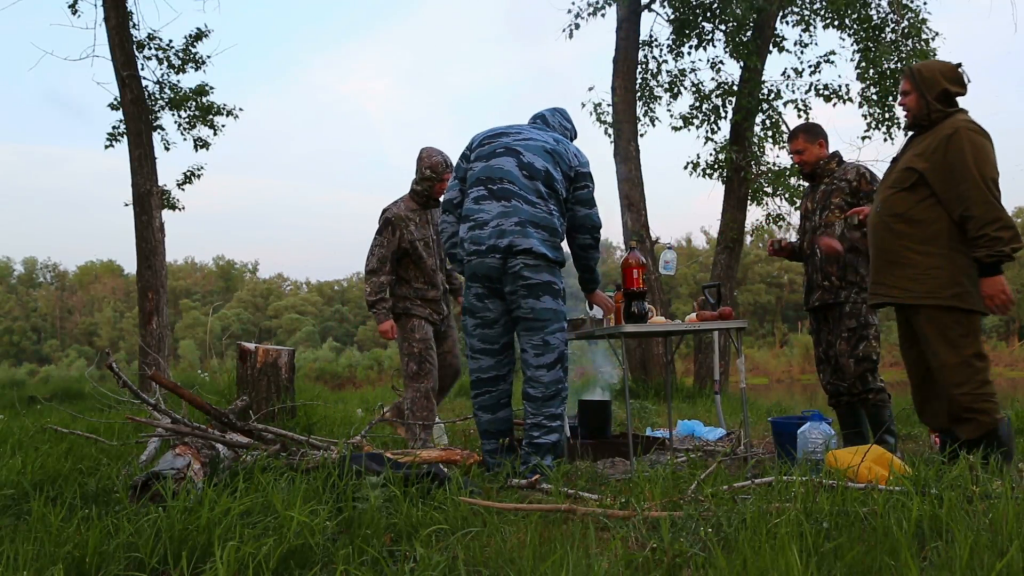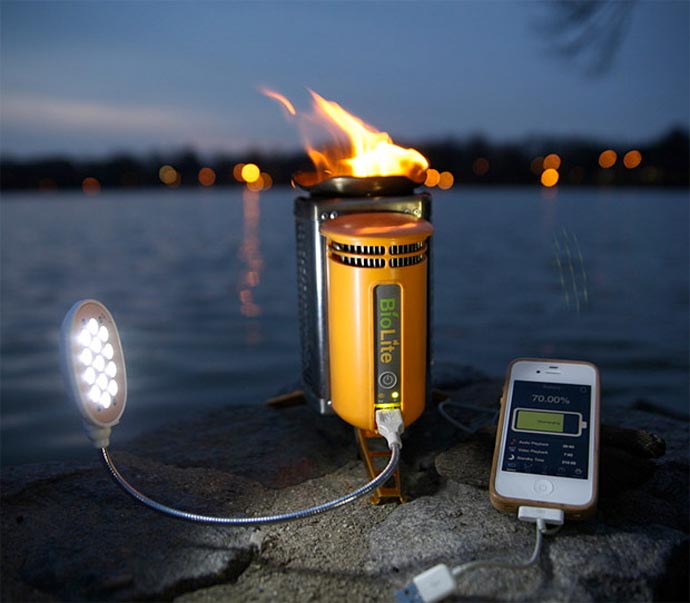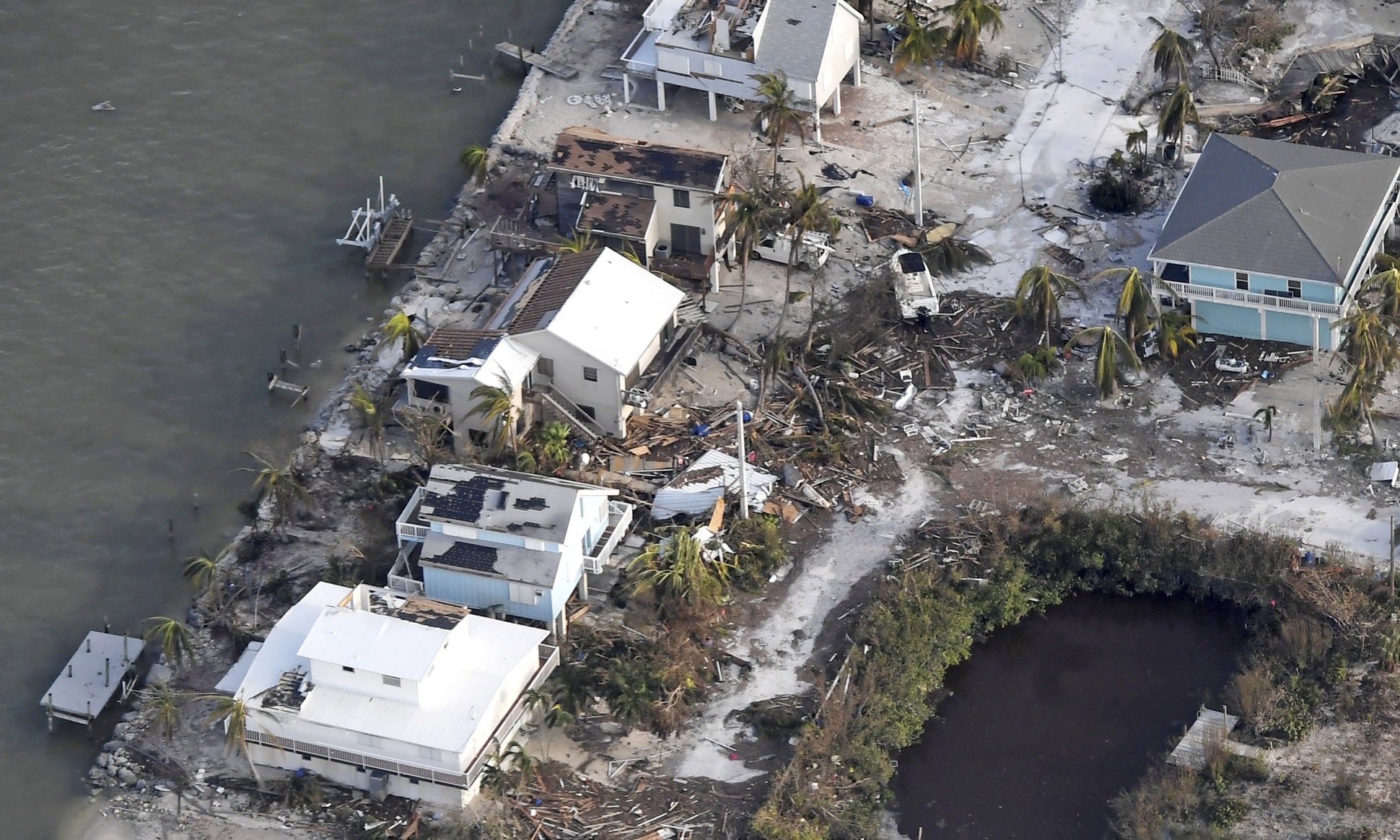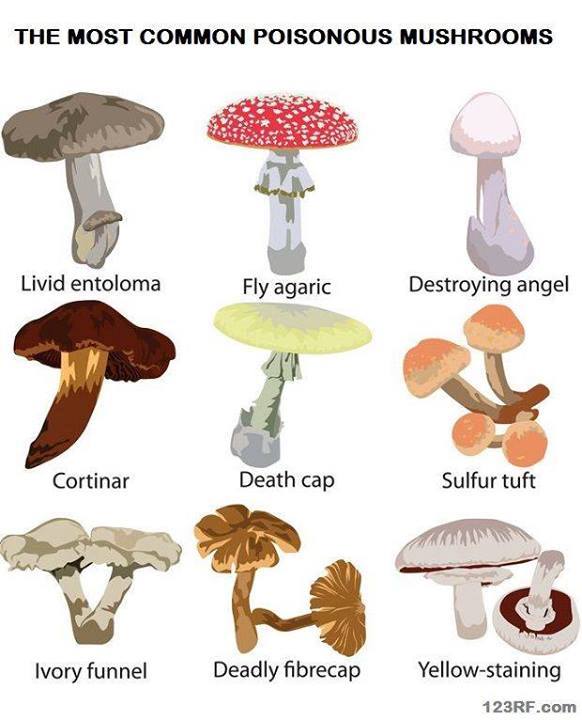Hardscaping Projects for Your Backyard
Your home should be your castle. For all the talk in the preparedness community about bugging out and heading for the country, unless your home is under direct attack, it is a far better plan to attempt to stay at home. It’s where your food supply is, it’s where your clothes and your tools are, and hopefully you have a solid, dependable roof over your head.
The fall and winter is usually the last time that you’d think about your outdoor areas, but it’s the ideal time to start planning for what you can do this spring and summer to help improve your home’s preparedness plan. Here are some great features to consider when creating your plan:
Food & Water Storage
Your backyard might not be the first place you think of when you start considering food and water storage, but it’s actually quite convenient.

Smaller root cellars can be as simple as burying a cooler in a shady spot, or digging a hole and covering the area with something. These are not the greatest or largest solutions, but they’ll work in a pinch.

For Water Storage, a cistern is an excellent solution. Cisterns are usually buried under your lawn, but could be free-standing. In either case, this is something you likely will want to have professionally installed, as mistakes could lead to thousands of gallons of water flooding your property. Either way, these large storage tanks take much of the guesswork out of storing water for an SHTF situation, and are made large enough that they will be useful as water for people, plants and cleanliness.
If not a large cistern, then how about a rain barrel connected to your gutter system. When well managed, rain barrels are a great method of securing a source of water for your survival garden at least, and for your family in a pinch.
You could also consider installing a pond or large fountain, which would be the most scenic water storage choice, although likely the least practical for usage, as the water would require a more significant filtering and cleaning process before use.
Living Space
 This past summer, when considering my preparedness plan, I noted that one thing we really needed was a redundant way to cook our food. We have gas appliances in our home, and I have a propane tank attached to the grill outside, but otherwise, we had no dedicated space or method for cooking. We solved this by putting a firepit in our backyard, along with a simple firewood storage box to keep nearby. Now we have a dedicated cooking area that will last as long as we keep getting branches from our trees (in other words, forever).
This past summer, when considering my preparedness plan, I noted that one thing we really needed was a redundant way to cook our food. We have gas appliances in our home, and I have a propane tank attached to the grill outside, but otherwise, we had no dedicated space or method for cooking. We solved this by putting a firepit in our backyard, along with a simple firewood storage box to keep nearby. Now we have a dedicated cooking area that will last as long as we keep getting branches from our trees (in other words, forever).
We ended up using our firepit so much that I installed a pergola, a few garden trellis walls, and a patio stone floor, and now we have almost a “room” outside where we can cool off, warm up, or camp out quite easily with minimal equipment. I’d feel comfortable out there with just a blanket if the weather permits.
My wife and I also like to adapt the kid’s stuff towards preparedness in some way. Our daughter’s play area includes a triangular set of trellises, and during the summer months, we plant pole beans around them to create a kind of teepee. Her tire swing and treehouse are built into our sugar maple, which we tap annually for syrup. She also has a small playhouse with a few built-in planters outside and a living roof that has a few herbs growing on top.
If you have the space for a shed, you could easily build one of those as a guest house, useful for storage, and if it’s far enough away from your main home, an easy bug out location on the premises in case of fire, flood or other catastrophe.
Food Growth & Gardening
Of course, in an SHTF situation, your backyard will serve as your grocery store. Raised plant beds are easy to install in any grassy area, and are perfect for growing all manner of veggies. Simply purchase the wood or bricks you wish to use, and lay them out in the area you choose. Build the wall at least four to six inches deep, and you’ll have enough soil to grow a bunch of different veggies in. If you want to go the extra mile and put landscaping fabric underneath, that may help control weeds, but it’s not necessary, and many people (myself included) have had mixed results.
 In addition to raised beds, you can consider creating miniature greenhouses. Build a box with a glass or plastic lid that can be easily raised or propped open so you can work in it, and ensure that that area gets plenty of light. During the winter months, you can plant a large number of vines or crops in these mini greenhouses that can provide fresh foods year round. This is also an ideal spot to start your seedlings in spring.
In addition to raised beds, you can consider creating miniature greenhouses. Build a box with a glass or plastic lid that can be easily raised or propped open so you can work in it, and ensure that that area gets plenty of light. During the winter months, you can plant a large number of vines or crops in these mini greenhouses that can provide fresh foods year round. This is also an ideal spot to start your seedlings in spring.
Once the end of the growing season hits, you’ll be very thankful if you created a compost pile where you can get free dirt and fertilizer. Enclosed three-bin systems are very easy to build, and provide the easiest long-term plan for gathering compost, but a simple garbage can purchased from the hardware store can function as a tumbler. Some people I know don’t even have bins, they simply have a pile covered with a tarp or wrapped in chicken wire. Compost is excellent for growing crops and a good way to reduce the amount of garbage you throw away every week.
In case you don’t have a lot of room, there’s still plenty you can do to garden. It’s possible to grow fruit trees in large pots, or if you have even a little room for planting in ground, you can maximize space by growing vine plants like cucumbers, pole beans and squash on trellises. Espalier is a method of growing a fruit tree next to a wall, and is ideal for creating a smaller fruit tree that actually makes very large and wholesome fruits in a small area. Arbors also work for maintaining a small tree in a controlled area. This method works best for pear plants and apples. It’s easy to grow many veggies in pots as well.
 If you have the space and the equipment, there is no better “greenhouse” solution than a Walipini. A Walipini is a dug out section of earth that is enclosed with a clear plastic or glass roof. Underneath, you have a 12-month greenhouse that can help your plants endure in any climate. A traditional greenhouse is an option as well, but may not offer the 12-month guarantee of a Walipini.
If you have the space and the equipment, there is no better “greenhouse” solution than a Walipini. A Walipini is a dug out section of earth that is enclosed with a clear plastic or glass roof. Underneath, you have a 12-month greenhouse that can help your plants endure in any climate. A traditional greenhouse is an option as well, but may not offer the 12-month guarantee of a Walipini.
We got most of our ideas for our backyard from two sources – Pinterest and our local botanic gardens. Both of these options offer a wide variety of alternative options for growing plants, and their hardscapes are not only beautiful, but often have tutorials attached.
Your home should be your castle. For all the talk in the preparedness community about bugging out and heading for the country, unless your home is under direct attack, it




 When the SHTF scenario finally occurs, one of the surest things that will happen is that alcohol’s value will skyrocket. People crave their vices, even if the vice is not one that causes a physical dependence, and they are usually willing to give up quite a lot to get even a drop of what they know and love.
When the SHTF scenario finally occurs, one of the surest things that will happen is that alcohol’s value will skyrocket. People crave their vices, even if the vice is not one that causes a physical dependence, and they are usually willing to give up quite a lot to get even a drop of what they know and love. Like all alcohol, vodka can be used in place of ethyl or isopropyl alcohol in medical applications. Obviously, as a designed food item, the vodka is not quite as good of an alternative as the real thing, but in a pinch, you can certainly use it to disinfect wounds, or rub it on the body over an area you may wish to cut into or sew to reduce the risk of infection.
Like all alcohol, vodka can be used in place of ethyl or isopropyl alcohol in medical applications. Obviously, as a designed food item, the vodka is not quite as good of an alternative as the real thing, but in a pinch, you can certainly use it to disinfect wounds, or rub it on the body over an area you may wish to cut into or sew to reduce the risk of infection. If you grow herbs, or use herbal medicine in any way, then vodka should already be part of your fall purchase list so that you can use it in creating tinctures to preserve herbaceous medicines. The process is simple – in a small, dark and opaque bottle or jar, fill the bottle or jar with herbs (leaves, flowers, roots, or whatever piece you’d normally use). Top off the bottle with vodka, and let it sit for a week or so in order to have the medicine steep into the liquid. After you’ve allowed the mixture to steep, you can strain out the liquid tincture, and store it in dropper bottles, which take up less area and have an adequate measuring system included.
If you grow herbs, or use herbal medicine in any way, then vodka should already be part of your fall purchase list so that you can use it in creating tinctures to preserve herbaceous medicines. The process is simple – in a small, dark and opaque bottle or jar, fill the bottle or jar with herbs (leaves, flowers, roots, or whatever piece you’d normally use). Top off the bottle with vodka, and let it sit for a week or so in order to have the medicine steep into the liquid. After you’ve allowed the mixture to steep, you can strain out the liquid tincture, and store it in dropper bottles, which take up less area and have an adequate measuring system included. Vodka is very high in alcohol content, and as anyone who experimented in chemistry can tell you, alcohol burns hot and quick. You can use vodka as an accelerant for fires (similar to lighter fluid). It does not create a steady, long burn, but it could help you catch a few twigs on fire, and is especially useful if you’re not all that skilled with bushcraft.
Vodka is very high in alcohol content, and as anyone who experimented in chemistry can tell you, alcohol burns hot and quick. You can use vodka as an accelerant for fires (similar to lighter fluid). It does not create a steady, long burn, but it could help you catch a few twigs on fire, and is especially useful if you’re not all that skilled with bushcraft. With a rag, a bottle of alcohol and a fire, you have an effective
With a rag, a bottle of alcohol and a fire, you have an effective  Alcohol in general can make you feel like you’ve increased your body temperature, and therefore, it is often thought of as a way to keep your internal body temperature high. In fact, alcohol does the opposite. You feel warm when you drink alcohol because it actually lowers your internal temperature, causing you to feel like you just walked out on a warm summer day wearing a winter coat. Drinking in cold temperatures can be very hazardous to your health. However, that false feeling, along with the numbing effect, can be an effective method for calming agitated people.
Alcohol in general can make you feel like you’ve increased your body temperature, and therefore, it is often thought of as a way to keep your internal body temperature high. In fact, alcohol does the opposite. You feel warm when you drink alcohol because it actually lowers your internal temperature, causing you to feel like you just walked out on a warm summer day wearing a winter coat. Drinking in cold temperatures can be very hazardous to your health. However, that false feeling, along with the numbing effect, can be an effective method for calming agitated people.











 Cardiac Glycosides are most often found in Lily-of-the-Valley, foxglove oleander and squill. First signs include headaches, confusion, vomiting, stomach pain, and dizziness. Children might also experience changes in heart rate and blood pressure.
Cardiac Glycosides are most often found in Lily-of-the-Valley, foxglove oleander and squill. First signs include headaches, confusion, vomiting, stomach pain, and dizziness. Children might also experience changes in heart rate and blood pressure. The best thing parents can do for kids is to teach them never to pick or eat anything from a plant they find outside, regardless of how good it smells or looks. Make sure your children know to eat plants or fruits from outside only if they have permission and if the plant has been washed thoroughly.
The best thing parents can do for kids is to teach them never to pick or eat anything from a plant they find outside, regardless of how good it smells or looks. Make sure your children know to eat plants or fruits from outside only if they have permission and if the plant has been washed thoroughly.



 Many of us like music, but don’t want to hear somebody learning to play the harmonica and singing may require those earplugs. Within my family, various infidels think Skillet is a pan, Pitbull is a breed, Celtic Woman is plural, FFDP=5FDP, and it’s normal to howl to country music. There’s audio torture in there for pretty much everybody.
Many of us like music, but don’t want to hear somebody learning to play the harmonica and singing may require those earplugs. Within my family, various infidels think Skillet is a pan, Pitbull is a breed, Celtic Woman is plural, FFDP=5FDP, and it’s normal to howl to country music. There’s audio torture in there for pretty much everybody. Books run the gamut from the usual suspects (
Books run the gamut from the usual suspects (
 Sensory Processing/ Perception Disorder can manifest in a range of ways. Some “feel” and “see” certain sounds – sometimes like corduroy rubbing in the ear, or that awful sensation of a pencil eraser’s metal scraping paper and desk. I don’t actually recognize background noises – clocks ticking, ceiling fans whirring, dogs panting, conversations behind a door, and rubbing of a callous are as prominent to me as face-to-face words. It has advantages and frustrations.
Sensory Processing/ Perception Disorder can manifest in a range of ways. Some “feel” and “see” certain sounds – sometimes like corduroy rubbing in the ear, or that awful sensation of a pencil eraser’s metal scraping paper and desk. I don’t actually recognize background noises – clocks ticking, ceiling fans whirring, dogs panting, conversations behind a door, and rubbing of a callous are as prominent to me as face-to-face words. It has advantages and frustrations.


 Simple chicken keeping all starts with choosing the appropriate breed of chicken. In order to do this you need to think about why you want chickens. Some people want meat chickens to grow and slaughter as a cheap source of food; however, the majority of people want chickens to lay eggs. Once you’ve figured out why you want chickens you can choose an appropriate breed.
Simple chicken keeping all starts with choosing the appropriate breed of chicken. In order to do this you need to think about why you want chickens. Some people want meat chickens to grow and slaughter as a cheap source of food; however, the majority of people want chickens to lay eggs. Once you’ve figured out why you want chickens you can choose an appropriate breed. Now you’ve actually chosen and bought your hens you should want to keep them healthy. In my experience chickens need three things to stay healthy; food, water and shelter. In terms of
Now you’ve actually chosen and bought your hens you should want to keep them healthy. In my experience chickens need three things to stay healthy; food, water and shelter. In terms of 




